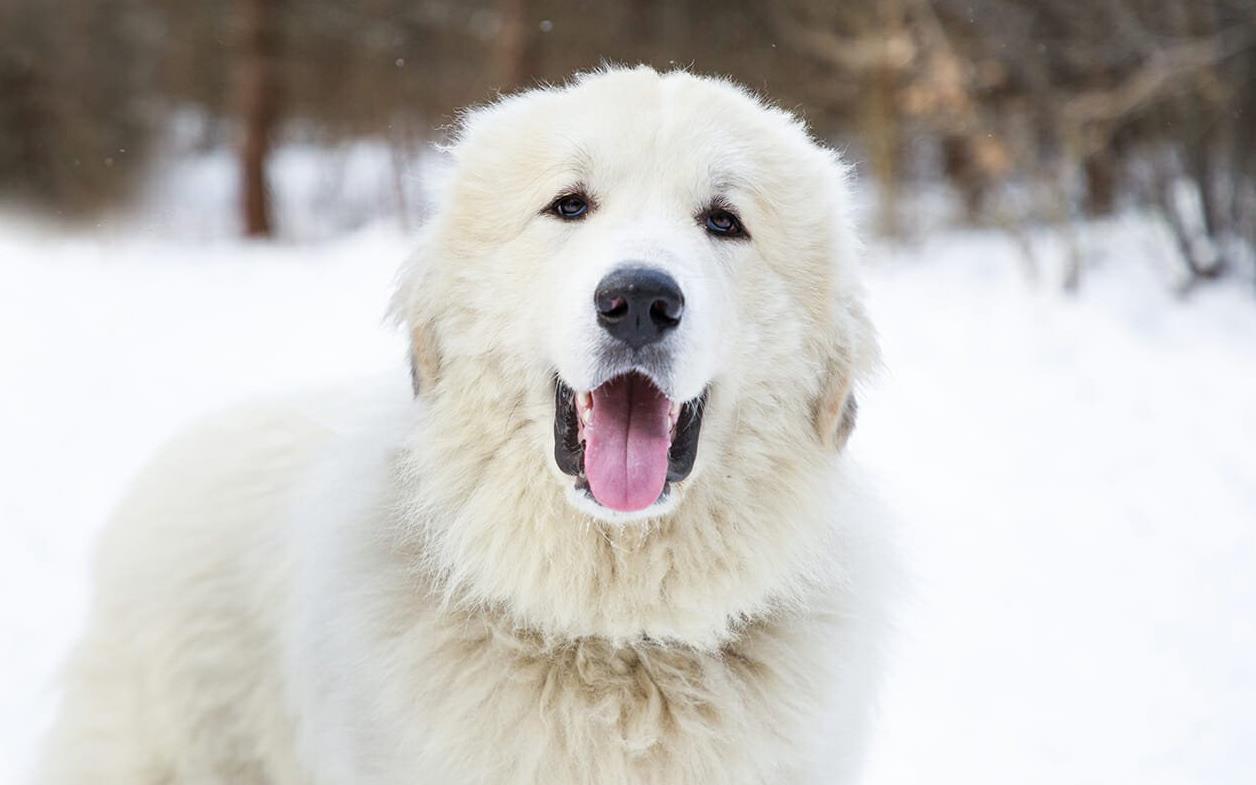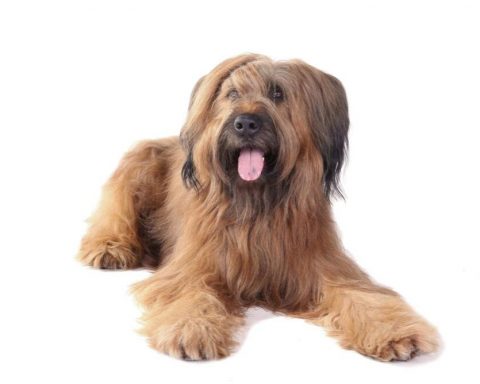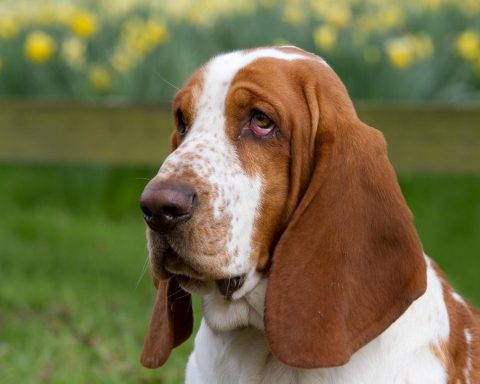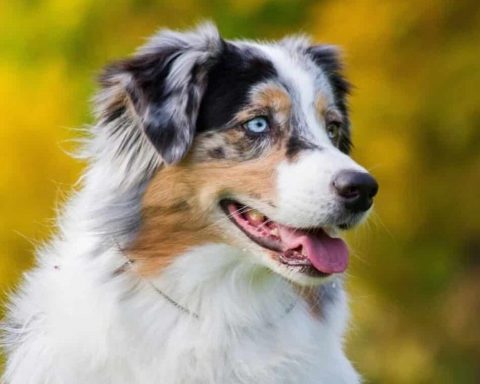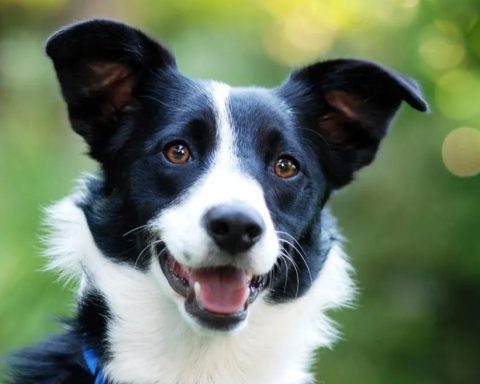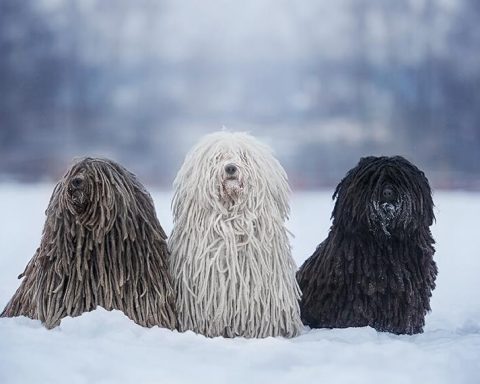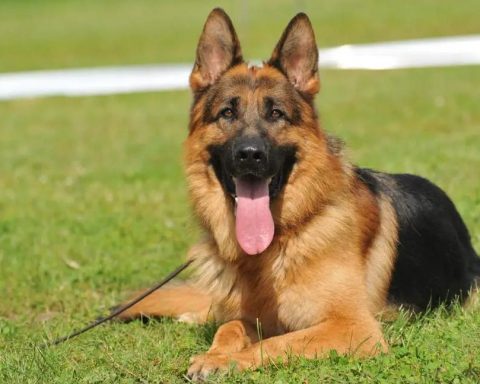Summary
The Great Pyrenees makes an impression of great elegance and beauty, combining his huge size with a majestic demeanor. His coat is white or predominantly white with gray, or teal markings of varying shades. He is very intelligent and, kind, and has a kingly demeanor.
Whether standing or moving, he displays a distinctive elegance, he always looks solid and well-coordinated, clearly reflecting the purpose for which the breed was bred: to guard the flock in all climatic conditions and on the steep slopes of the Pyrenees.
Place of origin
France
Body type
Size: males stand about 27 to 32 inches tall at the shoulder, females about 25 to 29 inches tall at the shoulder. 27-inch males weigh about 100 pounds, 25-inch females about 85 pounds. Body weight is commensurate with overall body size and physique. PROPORTION: A dog whose shoulder height is slightly shorter than its body length (the distance from the horse’s shoulder rump to the buttocks at the back of the thighs) and whose proportions are rectangular and physically harmonious. Length is slightly greater than height and the body is well angulated fore and aft.
Physique: The Great Pyrenees has a medium-sized body (not particularly fat or thin) and is easily deceived by its dense coat when its bones and muscles are not touched. In harmony with its size and elegant appearance, ample bone and muscle provide a balanced body structure.
Flaws: Size-Shoulder height less than the lower limit or greater than the upper limit. Physique-The bone is too heavy or too light, affecting the balance of the body structure.
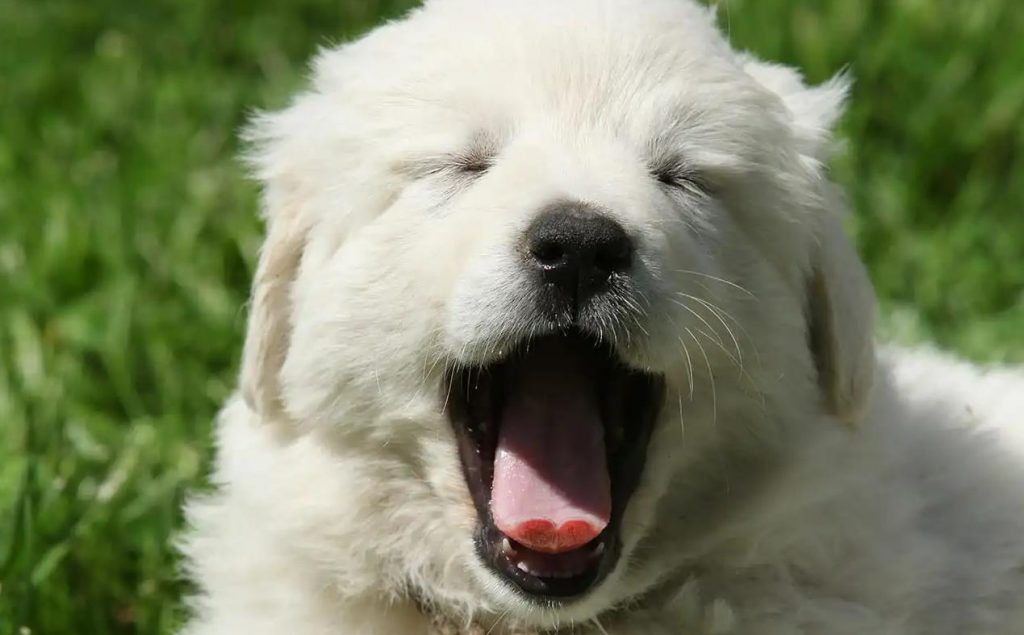
Head
Correct head and expression are the main points of this breed. The head is not overly heavy for the whole. Wedge shaped in appearance with a slightly rounded top.
Expression: The expression is civil, intelligent and silent. Eyes: Medium sized; almond shaped; slightly slanted; rich dark brown in color; orbits are black with the eyelids close to the eyeballs.
Ears: small to medium in size; V-shaped, slightly rounded at the tips; root of the ear is flush with the eye; normally drooping, flat, and close to the head. One typical phenomenon is the meeting place of the hairs on the face and lower part of the face, exactly in the line from the outer corner of the eye to the root of the ear.
Head and muzzle: The length of the muzzle is approximately equal to the length of the head. The head is approximately equal in length and width. The muzzle meets the head smoothly. The cheeks are flat. The muzzle is below the eyes and plump. There is a slight wrinkle between the two eyes with no visible stop. The brow bones are slightly protruding. Upper lip fits snugly on the palate and covers the lower lip. Lower jaw firm.
The noseglasses and lips are black.
TEETH: A clipper bite is desirable, a pincer bite is acceptable. Lower jaw incisors cannot be backward.
Defects:
- Overly heavy head
- Head too narrow or too small
- Cunning expression
- Has a pronounced stop
- Lack of pigment in eyelids, lips and noseglasses
- Eyes round, triangular, lax eyelids, small eyes
- Upper jaw protruding bite or lower jaw protruding bite
- Crooked mouth
Neck, dorsal line, torso
Neck: firm muscles with medium length and fairly little flab. Back: Horizontal back line. Body: Chest of medium width, well supported ribs, ovate, deep chest reaching the elbows. The back and loin are broad, firmly connected and slightly ruffled. The hips slope slightly downwards and the root of the tail lies below the dorsal plane.
Tail: The tailbone is of sufficient length to extend to the fly joints, and the tail is beautifully feathered with ornamental hairs. When resting, the tail hangs down, and when excited, it may curl up onto the back (forming a whorl). In showing, it is important for the tail to be trimmed to form a “shepherd’s curve”. When walking, the tail may curl over the back or droop, both of which are permitted. Flaw: Barrel chest.
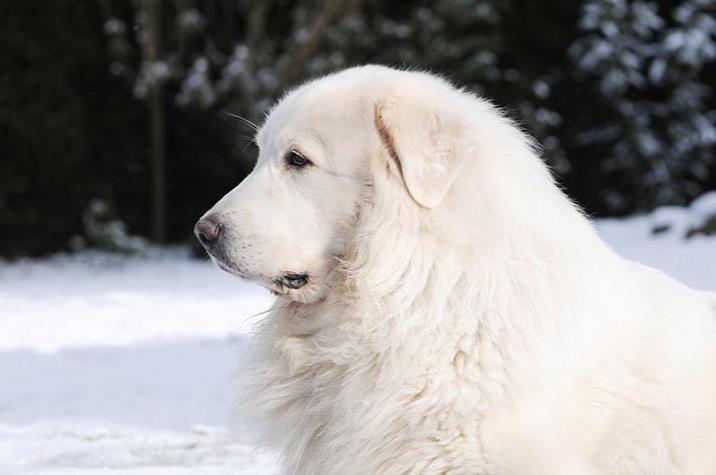
Forequarters
Shoulders: the shoulders are placed at a backward angle and are well muscled and hidden in the torso. The angle of the forearm at its junction with the scapula is approximately 90 degrees, and the forearm should never be perpendicular to the ground in the section that extends backward from its junction with the scapula to the elbow. The length of the scapula and the forearm bone is approximately equal. The distance from the ground to the elbow is approximately equal to the distance from the elbow to the horse’s shoulder rump.
Forelimbs: The forelimbs have adequate bone and muscle mass commensurate with a balanced body structure. The elbows are close to the body and straight back, both when standing and when walking. When viewed from the side, the forelegs are positioned just below the withers, straight and perpendicular to the ground. When viewed from the front, a straight line runs from the shoulder through the elbow to the forefoot. The forelegs are strong and flexible. Each of the two forelimbs has a wolf claw. Forefoot claws: rounded, compact, with thick pads and rounded arched toes.
Hindquarters
The hindquarters are angled similarly to the forequarters. Thighs: The first thigh is solidly muscled and at right angles to the pelvis. The first thigh is the same length as the second thigh, and observation of the outline reveals that the first thigh is at a moderate angle to the second thigh at the stifle joint. The stifle is of medium length and is perpendicular to the ground when the dog is standing naturally. Viewed from the side, the fly joints are moderately angled. When viewed from behind, the hind legs (from the hip to the hind foot carpals) are straight and parallel to each other. The hind limbs have sufficient bone and muscle mass commensurate with a balanced body structure. Each hind leg has two wolf claws.
Hind foot claws: the toes of the hind limbs are turned slightly outward. Such hind limbs (bull limbs) are unique to this breed and are not a defect. The foot claws are the same as the forelimbs, rounded, compact, with thick pads and rounded arches of the toes. Defect: The hind limbs do not have two wolf claws.

Coat
The coat, capable of withstanding any climatic conditions, consists of two layers of hair; the cloak hair is long, flat, thick, coarse, stiff, and straight or slightly wavy; the undercoat is dense, slender, and cottony. The hairs on the neck and shoulders of males are especially dense, forming a bib or mane. The longer hairs on the tail form a feathery trim.
The trim also extends to the back of the forelegs and the back of the thighs, creating a “pants” effect. The hair on the face and ears is short and of good texture. The correct coat is more important than the amount of hair. Defects: Curly coat; erect coat (like the Samoan).
Color
White or white with gray, reddish-brown, or teal markings of varying shades. Various sized markings can be found on the ears, head (including the mask), tail, and body (few stains).
The undercoat can be white or dark. The various colors and markings (locations) described above are unique to this breed and are not good or bad. Defects: the cloak coat is mottled more than 1/3 of the body.
Gait
The Great Pyrenees gait is smooth and graceful, accurate and held straight, showing strength and agility. Harmonious extension and powerful drive produce a correct stride. As speed increases, the paws are brought closer to the centerline of the body. Easy and efficient movement is more important than speed.
Temperament
His temperament and character are very important. In nature, the Great Pyrenees is confident, gentle and friendly. Protective of his territory, flock or family when needed, he is usually calm, collected, patient and tolerant. He is very strong-willed, independent and slightly reserved, caring, loyal and courageous towards humans and animals in his charge.
Although, the Great Pyrenees has reservations in competition, apparent shyness, nervousness, and aggressiveness toward humans are extremely unwelcome and are serious defects.
